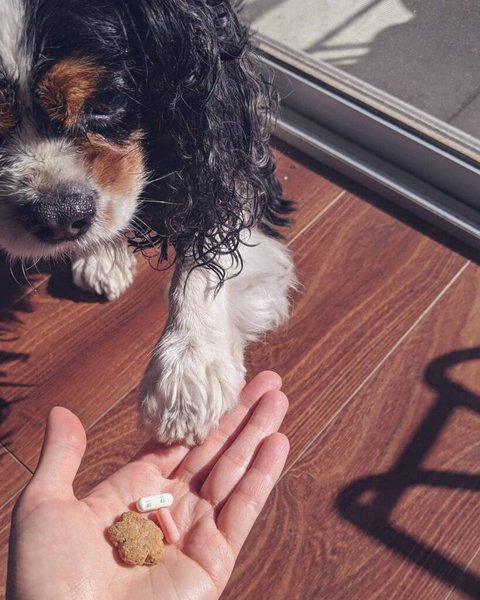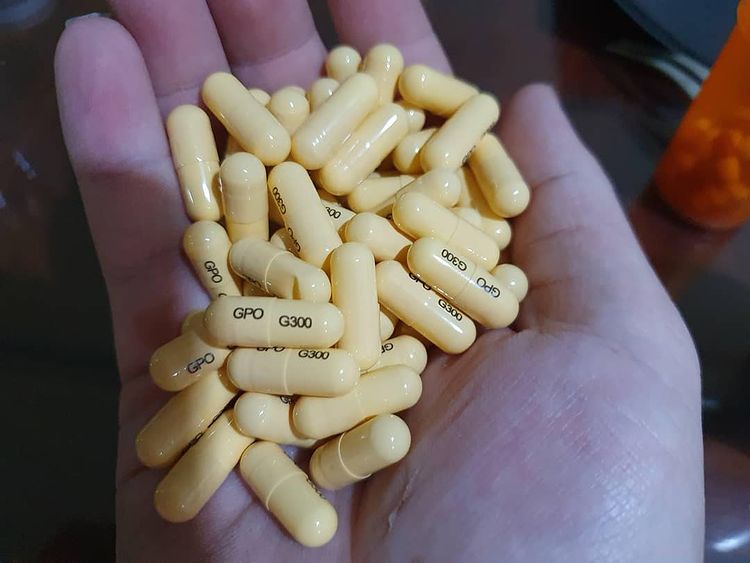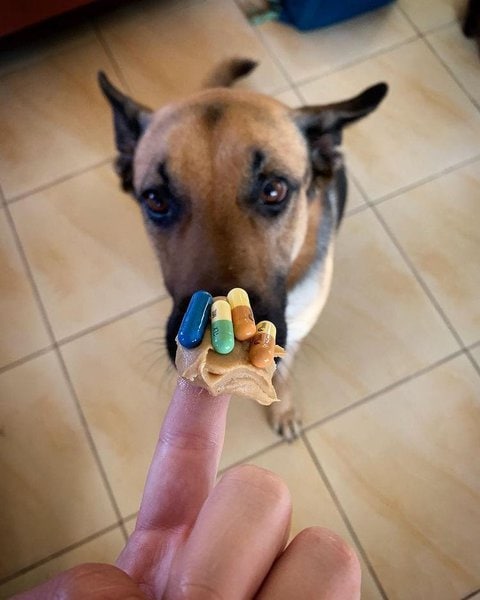If you notice your dog exhibiting flattened ears, low posture, shaking, panting, crying, or whining, then it may be experiencing some form of pain. These signs should be a warning that you should take your dog immediately to the veterinarian for a check-up. Several factors or conditions could cause pain and some of which may be more severe than others.
Gabapentin could be one of the drugs the veterinarian may prescribe to alleviate pain in dogs. Besides, dogs can safely take Gabapentin to alleviate seizures and anxiety, typically once every eight hours.
The precise mechanism of the drug on dogs is still unknown, but some believe that it affects the calcium channels in the nervous system, which then suppresses the neurotransmitters in the brain that perceives pain.
In this article, we will discuss the various medical conditions in dogs that this drug is used for. We will also tackle its side effects, the right dosage, and its possible reaction to other drugs.
What Is Gabapentin Used For In Dogs?

For veterinary use, Gabapentin is considered “off-label” or not FDA-approved for animals but is increasingly becoming popular among veterinarians.
This is because Gabapentin is relatively safe for dogs and thus can be prescribed for a number of reasons. It is administered to prevent seizures, reduce pain, and calm an overly-anxious dog.
This medicine is actually an anticonvulsant drug for humans. It is used for the treatment of seizures and also for pain due to diabetic neuropathy, postherpetic neuralgia, and central pain. This medicine is sold under several brand names like Gralise or Neurontin.
Seizure Prevention
Gabapentin being an anticonvulsant drug, helps dogs suffering from an inherited disorder like idiopathic epilepsy. The drug controls and stops seizures from the beginning.
During a seizure, the brain cells or neurons are speeded up, meaning it sends or fires electrical signals at a rapid rate. The drug works by controlling and preventing the brain cells from working too much, thus, stopping a seizure.
Gabapentin’s mechanism is not fully understood yet, but it is thought to cause the brain cells to produce an amino acid called Gamma-aminobutyric acid or GABA. This eventually attaches itself to a GABA receptor that inhibits voltage-sensitive calcium channels to stop brain cells from firing too much, thereby reducing the levels of pain.
Pain Control
Gabapentin has analgesic properties that help ease chronic pain due to cancer or a degenerative joint disease like arthritis.
It is commonly used in conjunction with pain relief medications, like nonsteroidal anti-inflammatory drugs (NSAIDs) and opiates, because it heightens the effect of these drugs.
Dogs that have a heightened sensitivity to pain, hyperalgesia, and allodynia, a condition that makes them sensitive to touch, also respond well to Gabapentin.
Anxiety
The drug is also used as a mild sedative to calm anxiety. Veterinarians may prescribe Gabapentin as a second drug to augment therapy.
Drugs such as fluoxetine, sertraline, or clomipramine are used to treat separation anxiety, fear-based aggression, and noise phobia.
Sometimes, however, the use of one-drug therapy is not enough to achieve a suitable outcome, so Gabapentin is prescribed as an adjunct.
What Is The Right Dosage Of Gabapentin?

The dosage for humans and dogs is different, so close supervision with your veterinarian is necessary. You should not prescribe any medication to your dog on your own because it can seriously affect the health of your dog.
The measurement depends on what ailment is being treated. It is available in 100 mg, 300 mg, and 400 mg capsules, as well as 600 and 800 mg tablets.
For seizures, the common dose is 4.5 to 13.6 mg per pound of the dog’s weight administered every 8 to 12 hours.
For chronic pain, the usual dose is 1.4 to 5 mg per pound of the dog’s weight. The dosage and frequency may be adjusted by the veterinarian according to the effectiveness of the drug.
For small dogs, the veterinarian may prescribe a customized formulation from a compounding pharmacy to make it easier to administer.
Veterinarians would usually start the dosage at the low end of the dose range and gradually increase it to evaluate the effect on the dog. Dose adjustments may be done after several weeks to check if the dog has developed tolerance to the drug. In which case, the dosage may be increased.
What If My Dog Misses A Dose Of Gabapentin?
If you miss giving your dog the medication at the right time, you can give it a dose immediately and wait 8 hours before giving another dose.
You can also just wait for the next prescribed scheduled time if the next dose is due soon.
Are There Any Precautions I Should Consider?
Yes, if your dog has liver or kidney disease, then Gabapentin should be avoided because the drug is excreted by the body through the kidneys.
The drug would stay longer in the bloodstream because it takes longer to metabolize. The drug should also not be used with pregnant and nursing dogs.
Do take note that oral solutions of Gabapentin may contain xylitol used as a flavoring agent. This should be avoided since xylitol is very toxic to dogs and would cause even more harm in the long run. It is always best to read the label before administering it to your dog.
Also, if your dog is on Gabapentin for a long period, its use should not be stopped abruptly. Your veterinarian would guide you to the proper tapering-off dosage of the drug to prevent the risk of withdrawal seizures.
What Are The Side-Effects Of Giving A Dog Gabapentin?
Gabapentin is generally safe for dogs and has few side effects. Mild sedation and ataxia or a wobbly gait are common side effects of the drug. At higher doses, your dog may experience diarrhea or vomiting.
Continued use could also result in deficiencies in vitamin D, calcium, vitamin B1, and folate, which are necessary for nerve repair. Supplements could be additionally prescribed to reverse the effect.
If you notice any of the following side effects that persist, then contact your veterinarian immediately:
- Hives
- Excessive itching
- Swelling
- Difficulty breathing
- Bulging eyes
- Oversleeping

What Other Drugs Can Have Reaction With Gabapentin?
If your dog is taking other medications such as the ones we listed below, you should consult your veterinarian to prevent any adverse reaction with Gabapentin.
Trazodone
Some veterinarians usually prescribe Trazodone with Gabapentin for dogs with situational anxiety, like a visit to the veterinarian.
The combination enhances the effects of both drugs and provides added anti-anxiety and sedative benefits.
Antacids
Antacids and Gabapentin should be given at least two hours apart. This is because antacids diminish the absorption of Gabapentin, thus reducing its efficacy.
Opiates
Opiates, like morphine and hydrocodone, are prescribed for pain and sometimes cough, should be properly supervised by the veterinarian when taken with Gabapentin.
Possible effects include increased dizziness and nausea.
Anti-Epileptic Drugs
Phenobarbitals and potassium bromide are usually given as anti-epileptic drugs. Mixing it with Gabapentin may increase the period between seizures and shorten post-seizure recovery.
Cannabidiol
Cannabidiol or CBD oil is an extract derived from the cannabis plant. It is known to reduce the symptoms of anxiety and depression.
Using CBD with Gabapentin is not recommended since it increases the effect of sedation.






